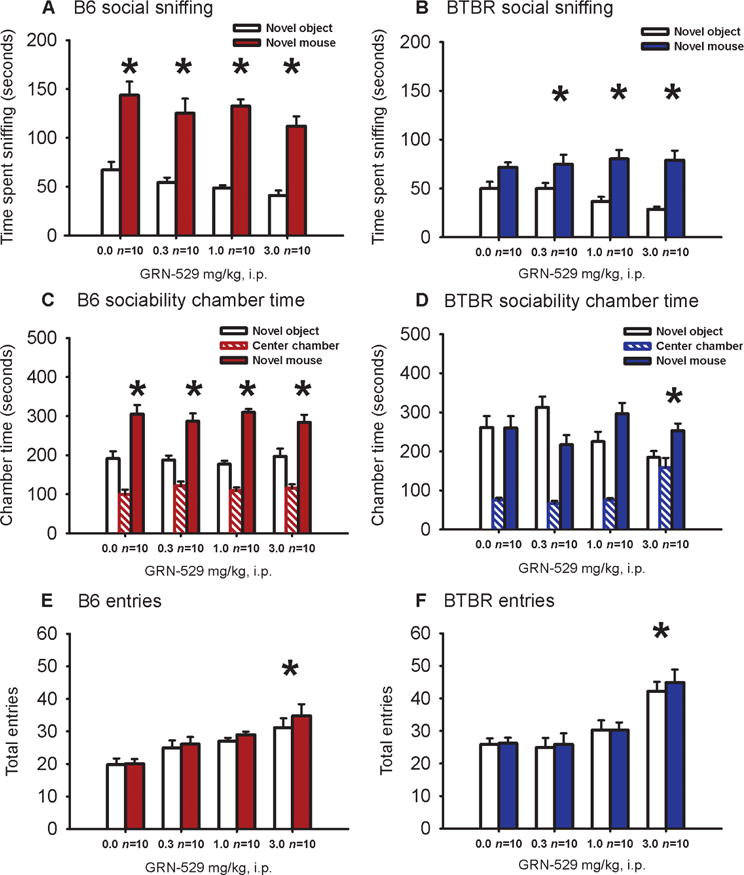Fig. 3.

Effect of GRN-529 on social approach in adult BTBR mice. Social approach was assessed in an automated photocell-equipped three-chambered arena with observer scoring of direct sniffing interactions from videotapes of the social approach. (A) B6 mice displayed sociability on the more sensitive parameter, time spent sniffing the novel mouse compared to time spent sniffing the novel object, at each dose of GRN-529 and vehicle. (B) BTBR exhibited its characteristic lack of sociability on the sniff parameter after vehicle administration. BTBR treated with a single acute dose of GRN-529, 0.3, 1.0, or 3.0 mg/kg intraperitoneally, exhibited significant sociability on the sniff time parameter. (C) The B6 control strain displayed normal sociability, defined as spending more time in the chamber with the novel mouse than in the chamber with the novel object, after a single intraperitoneal dose of vehicle (10% Tween 80/saline) or GRN-529 at doses of 0.3, 1.0, and 3 mg/kg. (D) BTBR exhibited its characteristic lack of sociability, that is, did not spend more time in the novel mouse chamber than in the novel object chamber, after treatment with vehicle or the two lower doses of GRN-529. At the highest dose, 3.0 mg/kg, BTBR displayed significant sociability. (E and F) B6 (E) and BTBR (F) displayed a greater number of entries into the side chambers after treatment with GRN-529 at the highest dose, 3.0 mg/kg intraperitoneally, indicating a general increase of exploratory activity during the social approach task at that dose. *P < 0.05, novel mouse versus novel object in (A) to (D); *P < 0.05 versus vehicle in (E) and (F). n = 10 per dose for each strain, cohort 1, assayed at NIMH. See fig. S2 for replicated findings in cohort 2.
